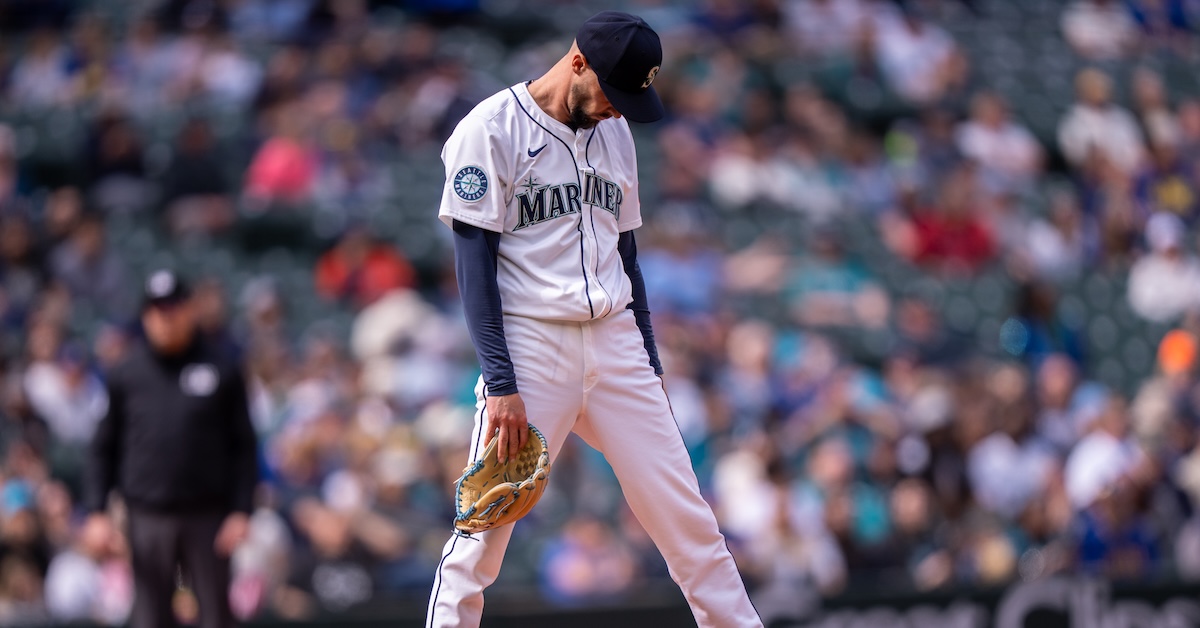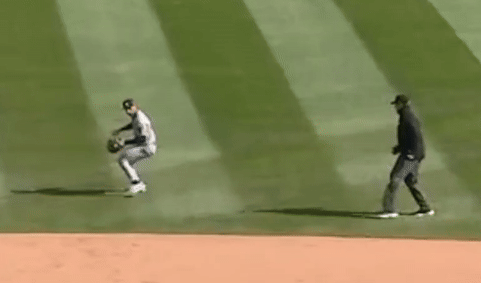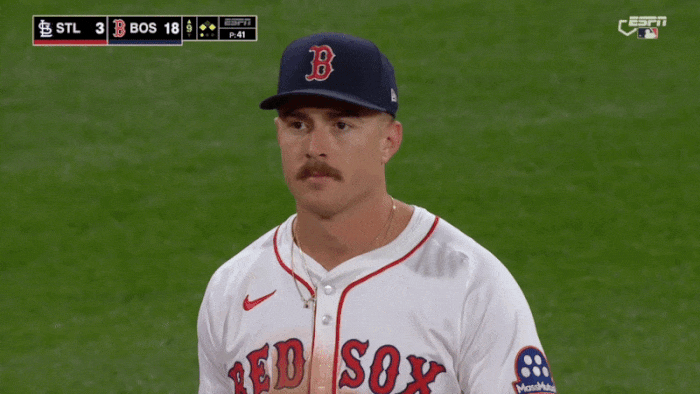This Is How You Earn (Or Lose) One Fielding Run

It’s April, which means that here at FanGraphs we’re contractually forbidden from overreacting to small sample sizes. Overreacting to defensive metrics, which require especially large samples before they stabilize, is an even graver offense, grounds for a written reprimand and public shaming. According to Statcast’s Fielding Run Values, the best non-catcher was worth 16 runs on defense last year. On the other hand, according to Weighted Runs Above Average, the best hitter in baseball was worth 93.8 runs. The sample sizes on defense are a lot smaller and most of the chances are routine, which limits the impact even the best or worst defender can have on the game. However, we’re not forbidden from having fun. Although the small sample sizes make it dangerous for us to draw sweeping conclusions, they make it easy for us to get granular, and nothing says fun like statistical granularity. Today, we’re looking for one thing in particular: specific moments in which we can see a player’s defensive metrics jump or fall by an integer in real time.
Oneil Cruz has already been the most impactful defender according to DRS, racking up a shocking -8 runs over 126 1/3 innings. How did he fall into this abyss? You’d have to dig through every play he’s made this season. It would take a whole article. Maybe I will write that article soon enough, but for now, I’m interested in the other side of the spectrum. Welcome, once again, to Small Sample Size Theater.
On March 31, the White Sox shut out the Twins, 9-0, behind six no-hit innings from Martín Pérez. In the top of the ninth, Rocco Baldelli moved Edouard Julien from second base to shortstop. Julien had never before played shortstop, either professionally or in college. Utilityman Willi Castro was on the mound lobbing in eephuses at 34 mph. Whatever lies beyond garbage time, that’s where this last half inning was taking place. The baseball played in this garbage void did not matter, but nobody told DRS or FRV, and naturally, the ball found Julien. Brooks Baldwin ripped a low line drive back up the middle, right where Julien was stationed (presumably because nobody told those little positioning cards about the garbage void either):
Julien speared a big hop and spun to throw, but for some reason, he was in no hurry at all. Perhaps because he was accustomed to the extra time afforded from the second base position, he took three extra steps, then double-clutched, delaying the throw by roughly six-tenths of a second. Maybe he expected Baldwin to be coasting down the line, but he turned what should have been an extremely comfortable play into a bang-bang play and an infield single. With that, he became the only player in baseball so far to be credited with costing his team a fielding run in just one measly inning at a position.
Will Julien ever play shortstop again? If he does, it probably won’t be for much longer than he did on March 31. He was the fourth-string shortstop in this game, and he was only there because the third-string shortstop was on the mound. If he never goes back, that -1 will be next to his name at shortstop for as long as we’re around to document such things. Officially, it gets marked down as a demerit to his range going left while playing shortstop, but really, that -1 is for dillydallying. This is what -1 OAA looks like:

As it turns out, -1 OAA looks a lot like doing some sort of synchronized dance with a very spry umpire.
On the other end of the spectrum, Angels pitcher Caden Dana earned 1 DRS on the one ball that was hit in his direction even though he didn’t field it. Dana made just one appearance this season before being sent back down to Triple-A, allowing three earned runs in three innings of work, but saving one with the glove, according to DRS. As with Julien, one solitary hard-hit ball back up the middle was the fulcrum around which he turned from an average defender to a saver of defensive runs. Truthfully, the play might have saved two.
On April 4, with two outs in the bottom of the inning, Dana hit the outside corner with a fastball to Nolan Jones. Jones hit a very sharp comebacker that may well have been ticketed for center field, scoring the runners on second and third. Instead, Baseball Reference’s description of the play reads “Groundout: P-2B-1B (P’s Left).”
The funny thing is that deflecting a ball like that just as often – maybe even more often – helps the batter rather than the pitcher, because by the time the pitcher redirects the ball, the fielders are already breaking hard toward its original destination and it’s hard to change directions that quickly. Pitchers are often instructed to avoid making that kind of desperate stab as the ball, both because it could hurt the team and because it could hurt their fragile human bodies, which don’t react well to baseballs. In this instance, however, Dana’s reflexes were the only thing keeping his ERA in the single digits. It’s never a great sign when you’re a right-handed pitcher whose left arm is your greatest asset.
Pitcher Casey Lawrence found that out firsthand. Just like Dana, Lawrence induced a comebacker with two men on, and just like Dana, he stabbed at the ball and ended up deflecting it toward the second base position with his glove. Unlike Dana, he deflected the ball away from his second baseman rather than toward him, loading the bases:
Sometimes the ball really doesn’t bounce your way. Lawrence deflected the ball to the exact spot where the second baseman would normally be standing, but because world baseball pulling champion Isaac Paredes was at the plate, the whole infield was shifted around to the left side. Lawrence wasn’t charged with an error, but the play did earn him -1 DRS and cost the Mariners one actual run. The next batter would knock in another run on a sacrifice fly, and in the following inning, Lawrence would also allow a run on a wild pitch.
Texas’ Ezequiel Duran holds the distinction of earning 1 DRS in the shortest amount of time at any one position, though I’m not totally convinced he earned it. Duran took over second base for the Rangers in the bottom of the seventh on April 7, and he touched the ball twice during his two innings there. He started a double play on a tailor-made chopper and he caught an underhand toss on the world’s easiest 5-4 fielder’s choice:
The timing was a moderately tight on the double play, but I tend to think an average second baseman should be expected to make that play with ease. I’m sure Sports Info Solutions has solid reasoning behind its criteria for these sorts of plays, but that’s got to be one of the easier runs Duran has ever been credited with saving.
On the other hand, Romy Gonzalez very much earned the demerit he received on the one ball hit to him during his three innings as a third baseman. With a runner on first, he got a beautiful chopper for a double play ball and gave his rookie second baseman a gnarly feed. Had Kristian Campbell somehow been able to change directions and actually get in position to catch this ball, Masyn Winn’s slide might have broken him cleanly in half:
Gonzalez was one of just two players to earn the full trifecta. In his three innings at third base, he is credited with -1 DRS, -1 OAA, and -1 FRV, not to mention an error (which I suppose makes it a quadrifecta). Any time you’re making this face on national television, something has terribly gone wrong:

The other player to earn the trifecta in just three innings at one position was Nick Maton, who simply booted a routine grounder, the only ball hit in his direction during his three innings at second base.
The last player is the toughest case. Jose Iglesias has been a dependable utility infielder for years, but a rash of injuries in San Diego forced him into the outfield for the first time in his 20-year career as a professional. On April 8, he spent two innings in left field and the ball found him five different times. Two were just singles that landed well in front of him, but according to Baseball Savant’s catch probability ratings, the other balls were one-star, two-star, and four-star opportunities. That’s just not fair. So far this season, just under 19% of all outfield chances have been difficult enough to earn a star from Statcast. In just three innings, Iglesias was at 100%. It wasn’t necessarily pretty, but he handled the one- and two-star catches:
Those balls had catch probabilities of 95% and 90%, respectively, and Iglesias even made sure to throw to the right base to keep the trail runner from tagging up on the second one.
The four-star ball was a different story. It had just a 25% catch probability. When you combine those three numbers, that means the average player would have been expected to make 70% of those plays, and Iglesias did just that, catching 67% of them. He may not have looked the part, but across three chances, he played like an average left fielder. As such, Iglesias’s two innings in left didn’t hurt OAA or FRV. However, his ugly angle cost him -1 DRS. The ball really does find you:
I might object to docking Iglesias on this play, or even overall. I’m not positive that even a good angle would have allowed him to stop that ball from reaching the wall, but here he is with a -1 next to his name all the same. As the season goes on, most of these players will get more chances to stack up bigger and better numbers, but for now, the short samples allow us to pinpoint the exact moment when they turned from average defenders into something else entirely. Everyone gets a fresh start as a league average performer in every category, then we get to work dicing things up and apportioning fractions of credit a million different ways. Here in the early going, small samples and aggressive rounding allow us to see the tiny building blocks that will eventually stack up to an entire season.
Davy Andrews is a Brooklyn-based musician and a writer at FanGraphs. He can be found on Bluesky @davyandrewsdavy.bsky.social.
First off, terrific article that both was informative and had me cracking up. Second off, this does not inspire much confidence in DRS. It just seems pretty arbitrary and error-prone in comparison with OAA.
Hi Jimmy, thanks so much for reading! I certainly didn’t mean to pick on DRS. I think it’s tremendously valuable, and the fact that it sometimes differs from other major metrics like FRV and DRP, both in the way it’s tabulated and the actual results, is often a good thing. Defense is often hard to quantify. Any metric is going to have its own biases and blind spots, so it can help to have a range of perspectives.
Fair enough – thanks!
I beg to differ Dave, defense isn’t often hard to quantify, it is always hard to quantify and the various systems prove, beyond any reasonable doubt, that as long as different measuring systems continue to produce dramatically different results all are subject to significant doubt as to their value.
This is a totally unsound argument. There is an infinite number of possible wrong quantifications of anything you want to measure. This implies nothing about the existence of a right quantification.
There may very well be a right quantification but the fact remains that it hasn’t been found yet and until it is shown that there is something resembling strong corroboration between the various conflicting systems presently available I see no reason to accept any of them.
Here is a hypothetical situation. We want to know the answer to “what is 2 plus 2?” We have four candidate answers generated by four different models. The candidate answers are 17, banana, 4.01, and 500. In this situation, is it a good idea to reject all the candidates because they don’t correlate well with each other?